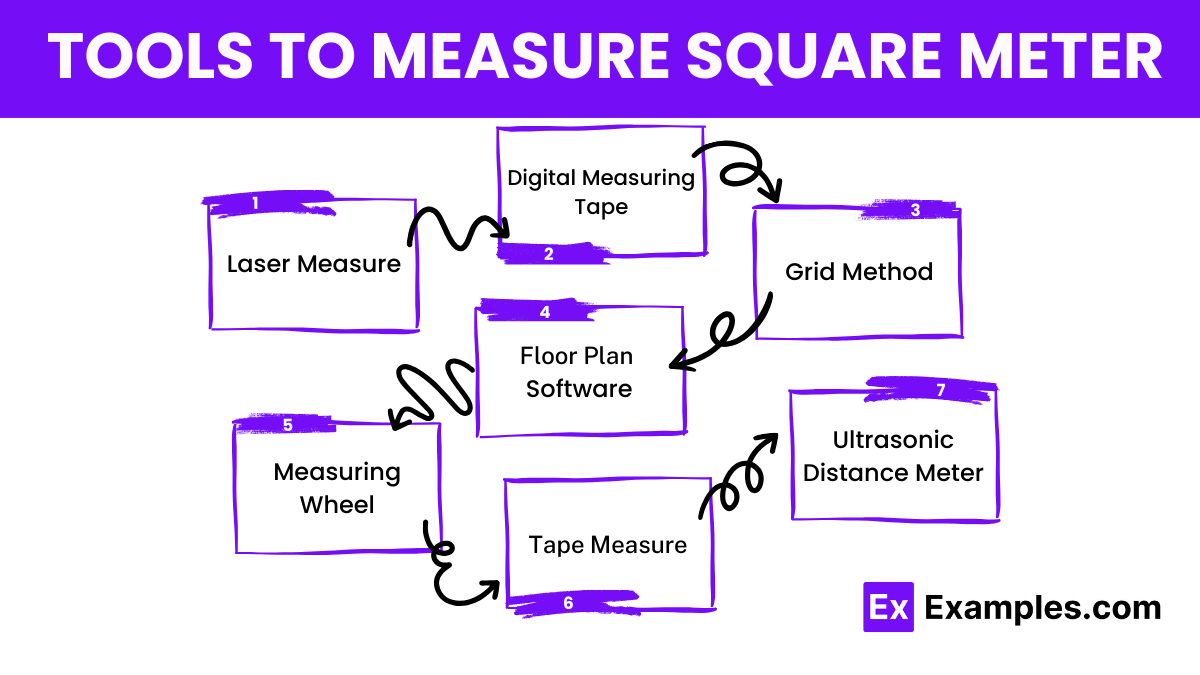What is the area in square meters of a rectangle with a length of 5 meters and a width of 3 meters?
12 sq meters
15 sq meters
18 sq meters
21 sq meters


A square meter is a metric unit of area, symbolized as m². It is defined as the area of a square where each side measures exactly one meter. Square meters are commonly used to measure the surface area of objects and spaces such as rooms, floors, and plots of land. This unit is widely utilized in fields like architecture, real estate, and construction to provide an accurate measurement of space for planning and development purposes.
This unit of measurement is part of the International System of Units (SI) and is primarily used to calculate the area of two-dimensional spaces, such as rooms, plots of land, or floors. It’s a critical measurement in architecture, construction, and land surveying, enabling precise spatial planning and effective use of space in both residential and commercial environments.

Measuring square meters, particularly for indoor spaces or smaller land areas, involves using a variety of tools that can provide precise dimensions. Here are some commonly used tools for measuring square meters:
Calculating the area in square meters for standard shapes involves using specific geometric formulas. Here’s how you can calculate the square meter for some common shapes:
Rectangle or Square:
Triangle:
Circle:
Trapezoid:
Parallelogram:

Here’s a table showing the conversion of square meters to other common units of area:
| Area Unit | Conversion from Square Meters (m²) |
|---|---|
| Square Centimeters | 1 m² = 10,000 cm² |
| Square Millimeters | 1 m² = 1,000,000 mm² |
| Square Kilometers | 1 m² = 0.000001 km² |
| Square Inches | 1 m² = 1,550.003 in² |
| Square Feet | 1 m² = 10.76391 ft² |
| Square Yards | 1 m² = 1.19599 yd² |
| Acres | 1 m² = 0.000247105 acres |
| Hectares | 1 m² = 0.0001 hectares |
Understanding how to convert square meters to other units of area is crucial for accurate measurements in fields such as real estate, construction, and landscaping. Here’s a straightforward guide to converting square meters to and from other common units of area:

The square meter is a fundamental unit of area in the metric system, widely used across various sectors for measuring surface areas. Here are some key uses of square meters:
One square meter represents the area of a square where each side measures exactly one meter. It is used to measure surface areas in the metric system.
A room that measures 12 meters by 12 meters has an area of 144 square meters. This is calculated by multiplying the length by the width: 12 m×12 m=144 m².
One square meter is equivalent to approximately 1,550 square inches. This conversion helps visualize the area covered by one square meter in terms commonly used in the United States.
Text prompt
Add Tone
10 Examples of Public speaking
20 Examples of Gas lighting
What is the area in square meters of a rectangle with a length of 5 meters and a width of 3 meters?
12 sq meters
15 sq meters
18 sq meters
21 sq meters
If a room measures 5 meters by 4 meters, what is its area in square meters?
10
15
20
25
What is the area in square meters of a square with a side length of 7 meters?
42
47
49
56
A rectangular garden measures 12 meters in length and 8 meters in width. What is its area in square meters?
80
85
90
96
Calculate the area in square meters of a rectangle with a length of 9 meters and a width of 3 meters.
18
24
27
30
What is the area in square meters of a room that is 6 meters long and 5 meters wide?
25
28
30
35
A rectangular field is 14 meters long and 10 meters wide. What is its area in square meters?
100
120
140
150
Calculate the area in square meters of a rectangle with dimensions 8 meters by 7 meters.
48
54
56
60
A rectangular room is 11 meters long and 9 meters wide. What is its area in square meters?
90
99
108
117
A square garden has a side length of 16 meters. What is its area in square meters?
240
256
272
280
Before you leave, take our quick quiz to enhance your learning!

